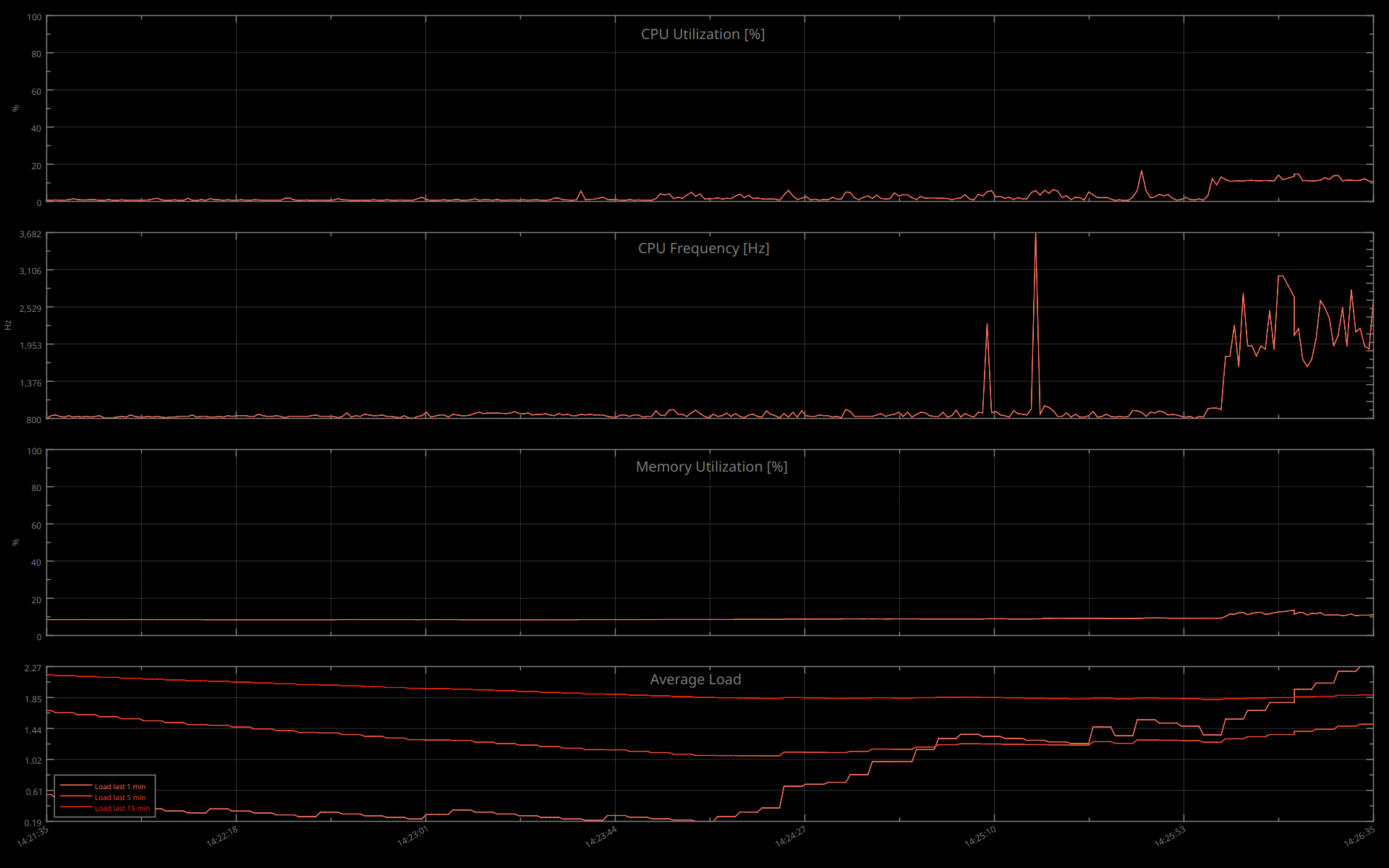Server monitoring via TCP
In this tutorial we will demonstrate how to monitor the system utilization on a remote host and to send the server metrics via TCP to the local host. On the local host, the data will be read and visualized in LabPlot.
To collect the relevant metrics and to send them via TCP, we utilize a Python script that is executed on the server and that opens a TCP socket for communication with external clients. This script is making use of the Python library psutil to retrieve the various system metrics like the current load, etc.:
#!/usr/bin/python3
import socket, psutil, time
HOST = 'localhost'
PORT = 1027
serv = socket.socket(socket.AF_INET, socket.SOCK_STREAM)
serv.setsockopt(socket.SOL_SOCKET, socket.SO_REUSEADDR, 1)
# bind host and port together
serv.bind((HOST,PORT))
# configure how many clients the server can listen simultaneously
serv.listen(1)
print ('listening ...')
# accept new connections
conn, addr = serv.accept()
print("connection from: " + str(address))
# send the current values for the server metrics
while True:
cpu = psutil.cpu_percent();
cpu_freq = psutil.cpu_freq().current;
mem = psutil.virtual_memory()
load = psutil.getloadavg()
message = str(cpu) + " " + str(cpu_freq) + " " + str(mem[2]) + " " + str(load[0]) + " " + str(load[1]) + " " + str(load[2]) + "\n"
try:
conn.send(message.encode())
# wait 1s before sending the next message
time.sleep(1)
except:
conn.close()
conn, addr = serv.accept()
In the example above, the current values for CPU utilization, CPU frequency, memory utilization and the average load for the last 1, 5 and 15 minutes are determined and transmitted to the connected client at one-second intervals.
Once the script is running on the server, we proceed with the creation of a Live Data Source object in LabPlot running on the local computer and connect it to the TCP socket that has been opened on the server side:
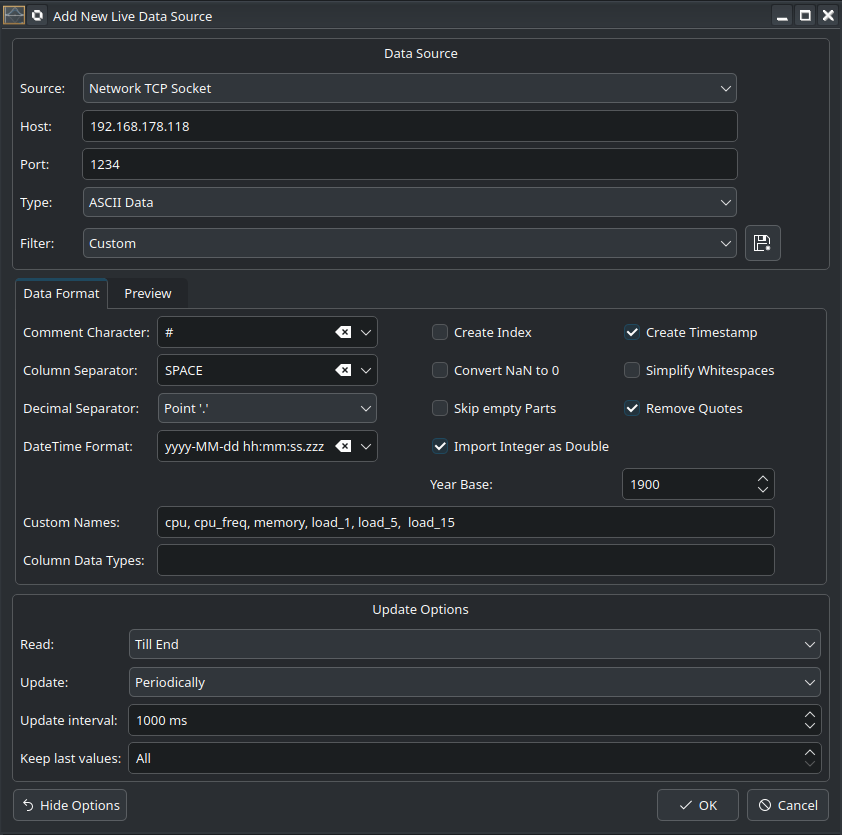
We activate the “Create Timestamp” option to obtain the timestamp for each read message. This allows us to use the timestamp on the x-axis later. We also specify the column names to clarify the meaning of the data columns. There is no need to provide a custom name for the automatically generated column “Timestamp”.
New data is read at 1,000 milliseconds intervals. Depending on the requirements, this can be adjusted to a higher or lower value, as well as the time interval to send new data on the server side.
To verify that data is being correctly received, we switch to the preview tab:
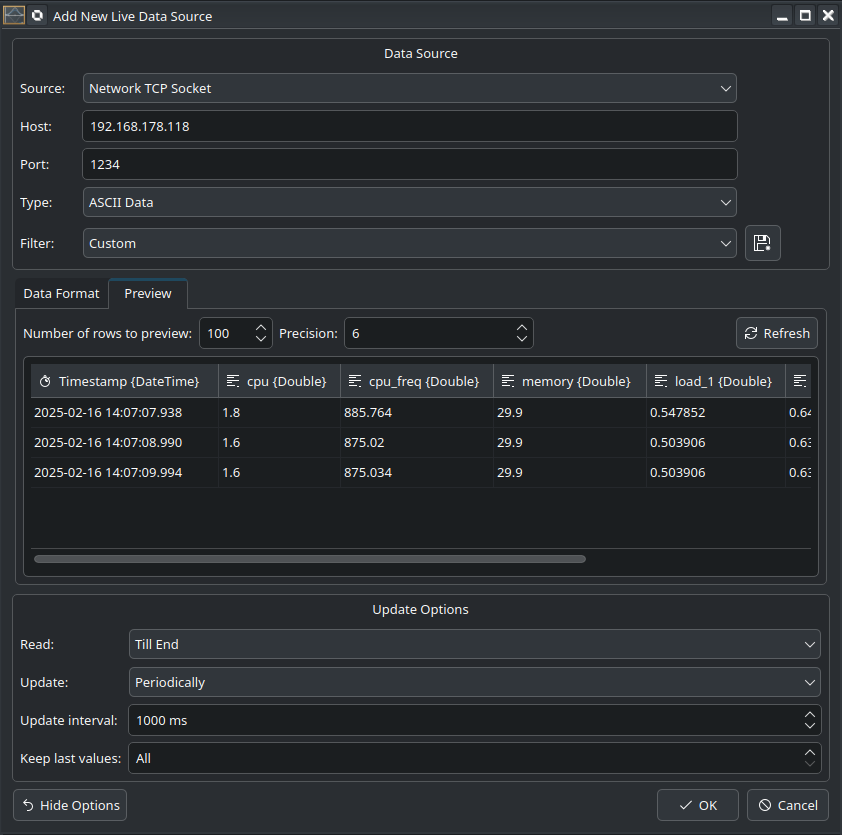
After clicking OK, the application starts reading the data from the TCP socket. Now, we create line plots to visualize this data. On the screenshots below the final result is shown:
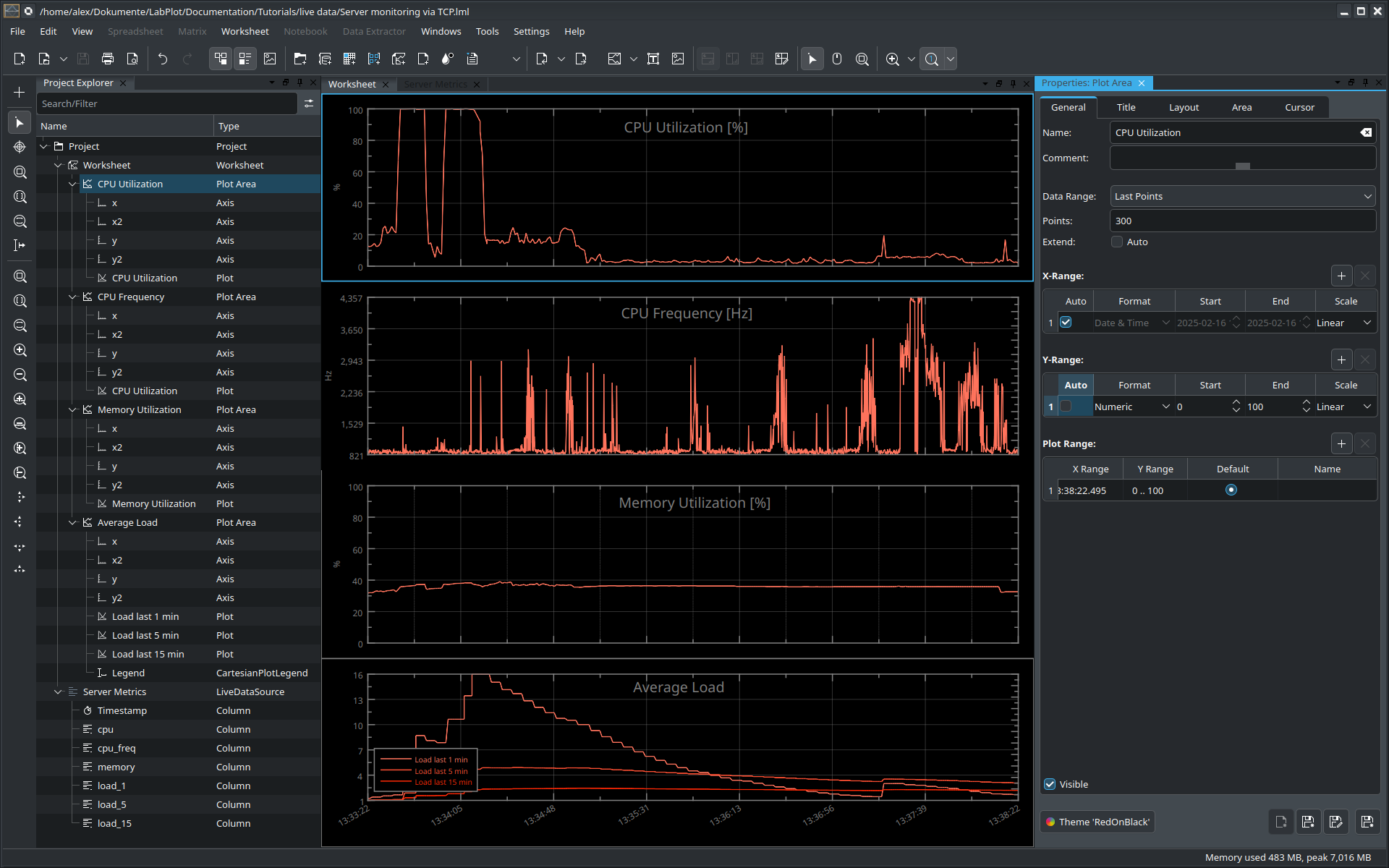
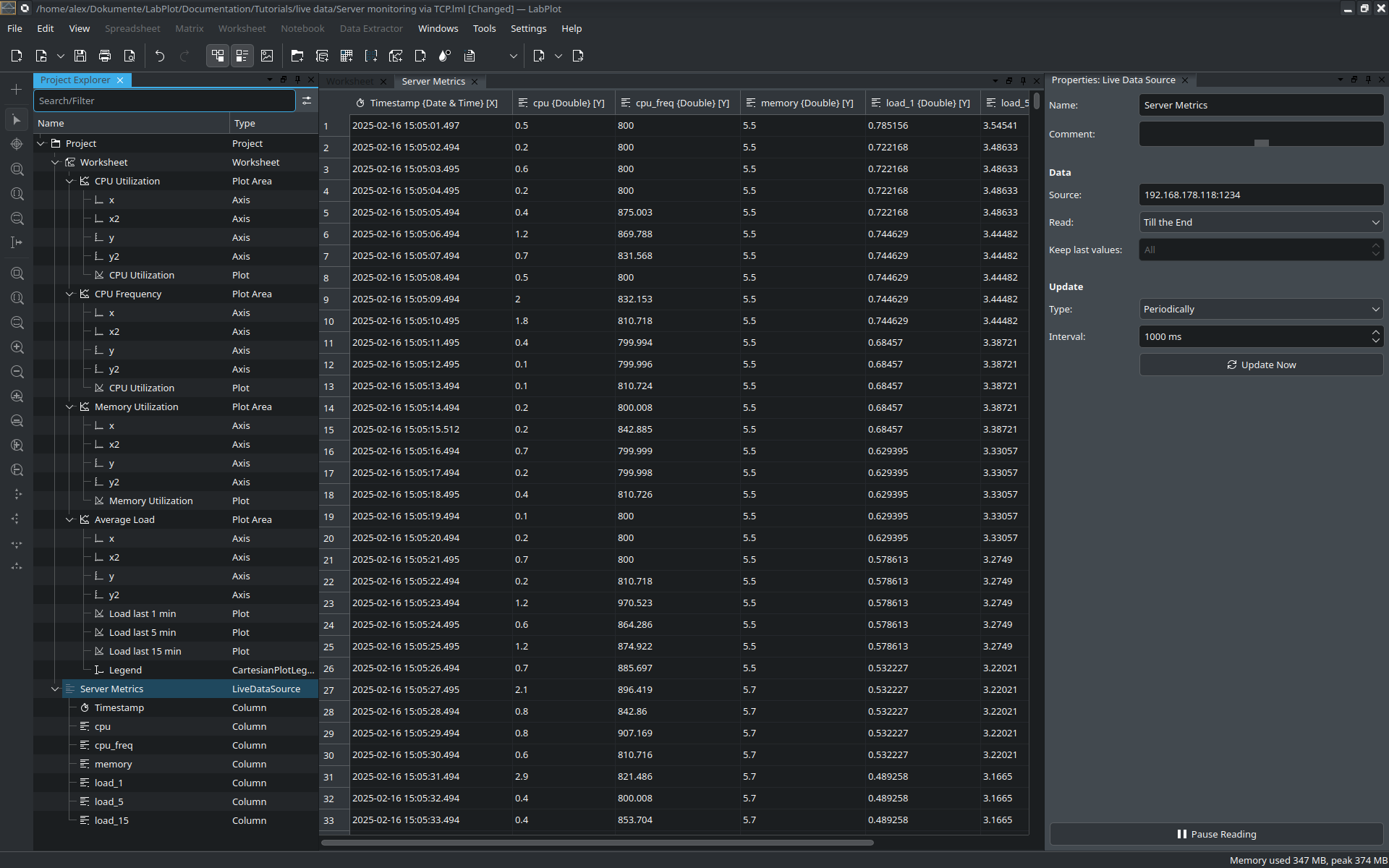
To use the entire monitor space, we open the worksheet in the presenter mode:
